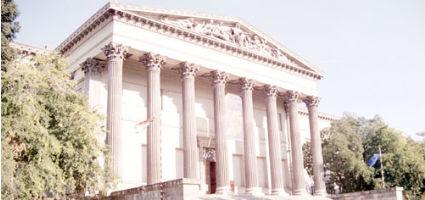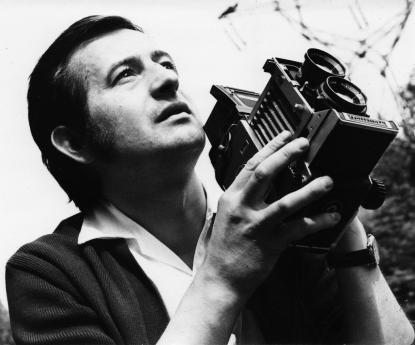2025. December 31. Wednesday
Hungarian National Museum - Budapest
 |
Address: 1088, Budapest Múzeum körút 14-16.
Phone number: (1) 338-2122
E-mail: info@hnm.hu
Opening hours: Tue-Sun 10-18
|
The exhibition has closed for visitors.
2011.07.01. - 2011.07.31.
Museum tickets, service costs:
|
Ticket for adults
|
1100 HUF
|
|
|
Ticket for students
|
550 HUF
|
|
|
Ticket for soldiers
|
550 HUF
|
|
|
Ticket for pensioners
|
550 HUF
|
|
|
Ticket for families
(2 adults + children)
|
1150 HUF
|
/ family
|
|
Individual guide
|
400 HUF
|
/ capita
|
|
Group guide
(max. 5 people)
|
1800 HUF
|
/ group
|
|
Group guide
(11-15 people)
|
6000 HUF
|
/ group
|
|
Group guide
(max. 15 people)
|
5500 HUF
|
/ group
|
|
Group guide
(16-25 people)
|
9700 HUF
|
/ group
|
|
Group guide
(1-5 people)
|
1500 HUF
|
/ capita
|
|
Group guide
(6-10 people)
|
13000 HUF
|
/ group
|
|
Group guide
(11-15 people)
|
16000 HUF
|
/ group
|
|
Group guide
(16-25 people)
|
24000 HUF
|
/ group
|
|
Group guide for students
(max. 25 people)
|
4500 HUF
|
/ group
|
|
Group guide for students
(max. 15 people)
|
6000 HUF
|
/ group
|
|
Group guide for students
(max. 25 people)
|
12000 HUF
|
/ group
|
The exhibition presented by Hungarian National Museum commemorates the photographer for the Hungarian News Agency, István Mizerák (1942-1998). Over thirty large black and white photos revive the unique world of Mizerák, reviewing his career and his opportunities in Hungary in the second half of the 20th century.

István Mizerák was born on 19 December 1942 in a family in Upper Hungary. His parents (István Mizerák, Erzsébet Dorkó) moved to Ózd from a territory that was attached to Czechoslovakia. Even though at school he was interested in acting, his interest in photography took over soon. One of the most important even in his life was when he sold a silver necklace and bought a camera for the money he got for the necklace. It was the beginning of a long-lasting love and his career as a photographer. He developed the pictures and enlarged them himself even at that young age. His official career began in 1966 when he entered a photo contest under the name 'Finita' and won second prize.
Those days, Ózd was a rich and busy town due to the iron- and steel company in town. István Mizerák was first employed in Ózd. The position of protocol photographer did not mean serving the parade of political leaders. Photos of that era mostly reflect politics and 'power' ironically. On the other hand, he took beautiful photos while walking in the plants of the steel factory of workers lit by burning iron and steel. He saw beauty in raw geometry surrounding him.
The topic for most of his pictures was metallurgy, iron-workers. Looking at the photos today, it is not 'proletarian' or 'socialism' that comes to our mind but humanity before robotised industry.
István Mizerák started working for MTI in 1968. Almost all national papers published photos by him in the following years. He regularly published in 'Déli Hírlap', the 'Ózdi Vasas' and the 'Észak-Magyarország'.
He loved nature. Photos of the National Park of Aggtelek were used by UNESCO to show the region. In 1977 he won UNESCO Award with the photo The Cradle of Life. He showed both in Hungary and abroad, he was awarded several times. He helped Hungarians living in Transylvania in December 1989 together with the Red Cross.
In the 90s he partially lost his eyesight, but kept working until the last day of his life. István Mizerák’s course of life is exemplary: His oeuvre of the provincial town-born Mizerák is high standard and his photos are just as valuable now as when they were taken.
He died on 9 April 1998 in Ózd.

István Mizerák was born on 19 December 1942 in a family in Upper Hungary. His parents (István Mizerák, Erzsébet Dorkó) moved to Ózd from a territory that was attached to Czechoslovakia. Even though at school he was interested in acting, his interest in photography took over soon. One of the most important even in his life was when he sold a silver necklace and bought a camera for the money he got for the necklace. It was the beginning of a long-lasting love and his career as a photographer. He developed the pictures and enlarged them himself even at that young age. His official career began in 1966 when he entered a photo contest under the name 'Finita' and won second prize.
Those days, Ózd was a rich and busy town due to the iron- and steel company in town. István Mizerák was first employed in Ózd. The position of protocol photographer did not mean serving the parade of political leaders. Photos of that era mostly reflect politics and 'power' ironically. On the other hand, he took beautiful photos while walking in the plants of the steel factory of workers lit by burning iron and steel. He saw beauty in raw geometry surrounding him.
The topic for most of his pictures was metallurgy, iron-workers. Looking at the photos today, it is not 'proletarian' or 'socialism' that comes to our mind but humanity before robotised industry.
István Mizerák started working for MTI in 1968. Almost all national papers published photos by him in the following years. He regularly published in 'Déli Hírlap', the 'Ózdi Vasas' and the 'Észak-Magyarország'.
He loved nature. Photos of the National Park of Aggtelek were used by UNESCO to show the region. In 1977 he won UNESCO Award with the photo The Cradle of Life. He showed both in Hungary and abroad, he was awarded several times. He helped Hungarians living in Transylvania in December 1989 together with the Red Cross.
In the 90s he partially lost his eyesight, but kept working until the last day of his life. István Mizerák’s course of life is exemplary: His oeuvre of the provincial town-born Mizerák is high standard and his photos are just as valuable now as when they were taken.
He died on 9 April 1998 in Ózd.
